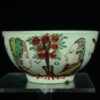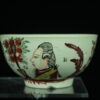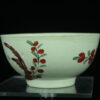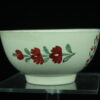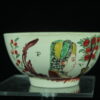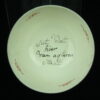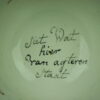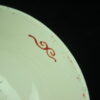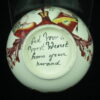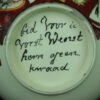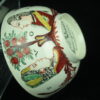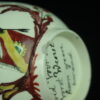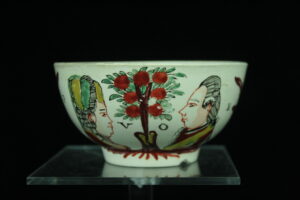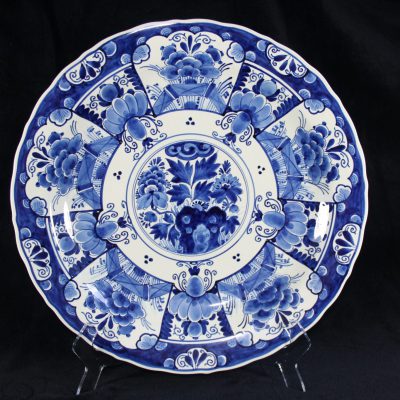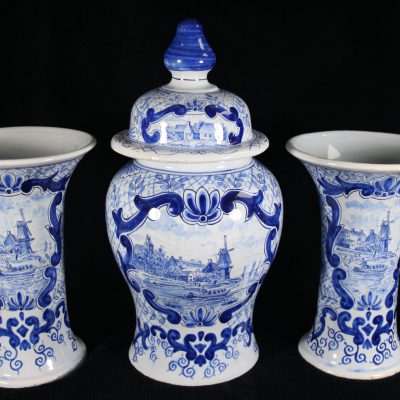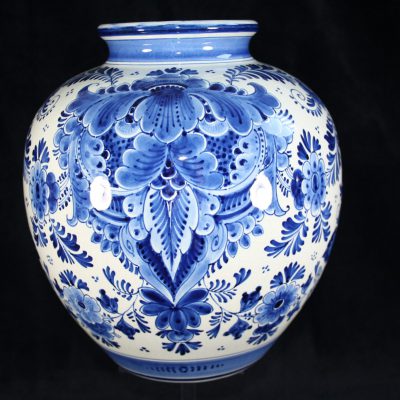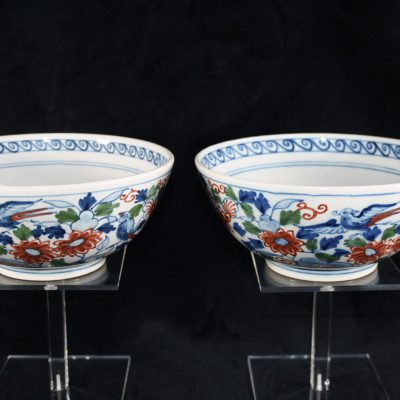€475
A rare Orangist Delft polychrome creamware bowl.
In stock
Description
99999 – A rare Orangist Delft polychrome creamware bowl.
A creamware bowl, polychrome, decorated with the Orangist inscription: 'Siet wat hier van agteren staat' (translation: See what it says at the backsite). On the bottom: 'Bid voor u vorst wenst hem geen kwaad' (translation: Pray for your prince, wish him no harm).
The creamware bowl was manufactured in Staffordshire (Leeds or Liverpool, England) for the Dutch market, and painted by hand after arrival in Holland.
In good condition, small chip bottom.
Age: circa 1780
Height : 5,5 cm
Diameter: 10,5 cm
Weight: 94 gr
Delftware objects displaying Dutch monarchs, royal coats of arms and symbols of the Royal House, such as the orange tree, are known as Orangist Delft. Owning and displaying Orangist Delftware was a strong symbol of allegiance towards the monarch. In fact, these depictions became more frequent as the political position of the stadholders were challenged. During these tumultuous periods, the Orange partisans expressed their unwavering loyalty by adorning their houses with the symbols of the Kingdom.
This tradition reached its height during the third quarter of the eighteenth century when Prince William V was at the crown. William V was the last stadholder of the Dutch Republic. He was unable to prevent the fourth Anglo-Dutch war that resulted in the loss of many of the Dutch colonies. The economic fragility of his reign aroused hostility in the Patriots, a groups of discontented burghers who wished to restore the republic to its former glory. In 1785, an open conflict between the the Orangists and the Patriots forced the Royal Couple to flee The Hague. With the help of Prussian troops, the Prince regained control of the country and restored his authority in 1787.
During the conflicts, the Orangists and the Patriots used the decorative arts as political propaganda. On delftware, the Patriots depicted William, and his family as wild pigs, trampling over the rights of the Dutch people. Meanwhile, the Orangists called the rebels mad dogs and madmen. Looking at the objects that remain today, it seems that Orangist Delft was the most popular, likely due to Delft being a royalist city. Depictions of William V and symbols of the House of Orange are mostly found on plates.
Your purchases are packed very carefully and insured with PostNL.

